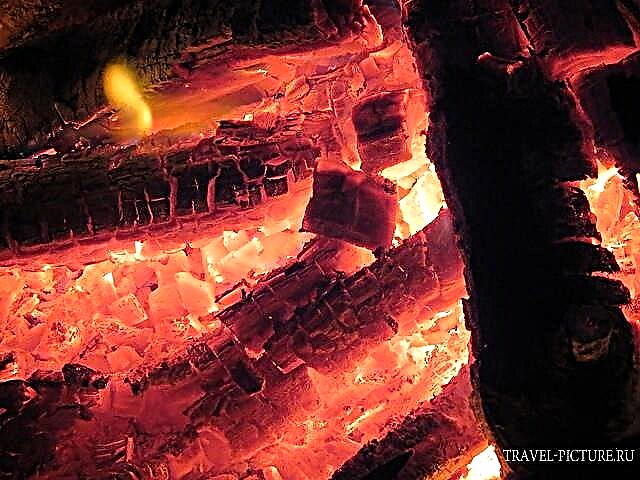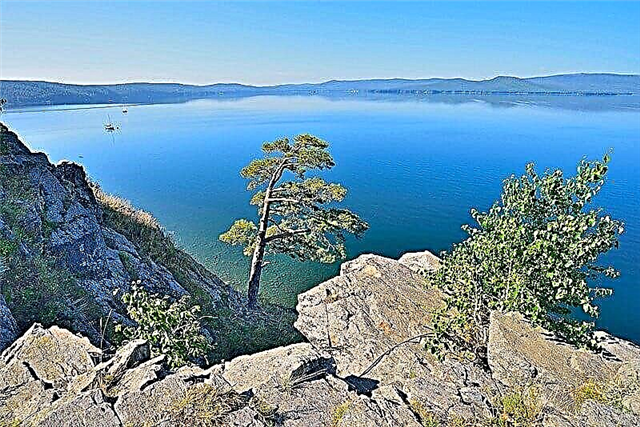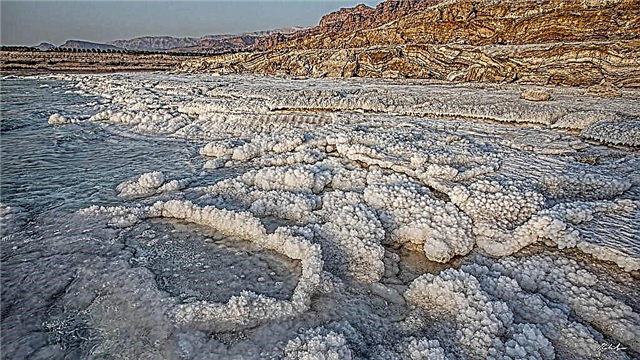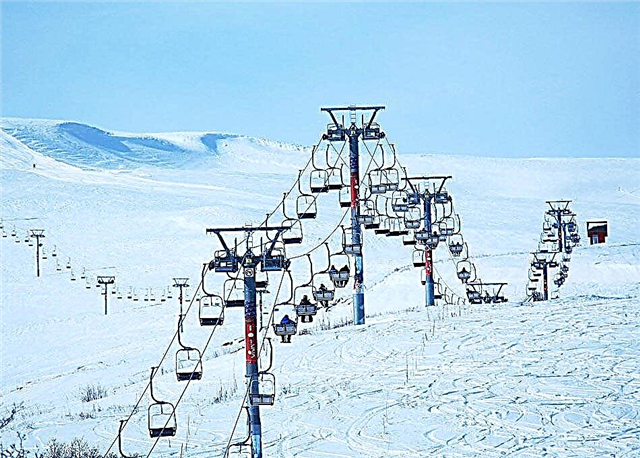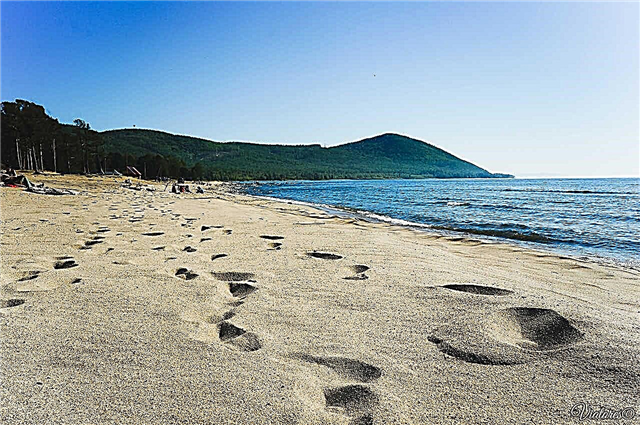Astrakhan is an ancient city that has preserved many architectural and historical monuments. The most famous among them is the Astrakhan Kremlin of the 16th century, a must-see item in all travel guides. The city is located on 11 islands washed by the Volga, Kutum, Tsarevo, Bolda and Kizan. For the abundance of bridges and canals, it is often compared to Venice. The historical center is a unique collection of ancient architectural monuments.
Astrakhan will also be appreciated by lovers of cultural recreation. Theater evenings, visits to museum expositions and art exhibitions await you. Outside the city, guests will find no less interesting places. These are fish farms, and a visit to the capital of the Golden Horde, and of course, a trip to the Caspian seaside. The ideal time for a trip is August, when the Astrakhan heat is not so strong, the lotus blooms and the famous watermelons ripen.
The most interesting and beautiful places
List, photo with names and descriptions of the best sights of the city. He will help you plan routes for exploring the top places of the city and its environs in 2-3 days.
Astrakhan Kremlin
The historic center of Astrakhan is located on an island washed by the Volga, Kutum and Tsarev. Here, at the highest place, a white-stone fortress was built in the 16th century. The complex of this architectural monument includes 22 objects. Many of them have retained their original appearance. The Kremlin is open to the public; a beautiful park is laid out behind the ancient walls. Visitors can climb the fortress wall, view the panorama of the Kremlin and the city.
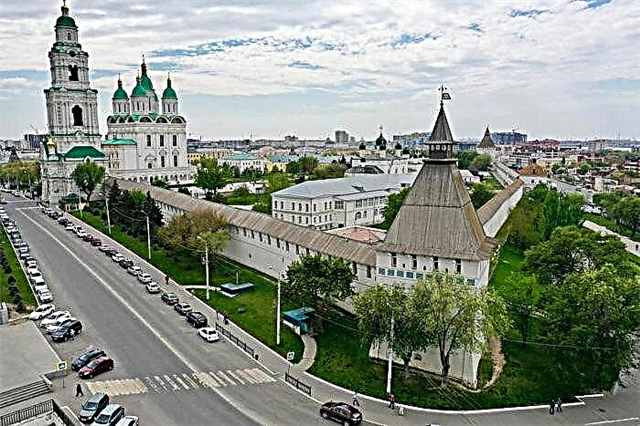
Petrovskaya embankment
The main city embankment stretches along the left bank of the Volga for almost 3 km. This is a favorite place for walking, there are many green areas and small monuments, and cultural events are regularly held. The name of the embankment was given only in 2017, thanks to the opening of the monument to Peter I and Petrovskaya Square. In the beginning, there are many cozy cafes, there is a floating restaurant and a singing fountain, tourist boats leave from the pier for a walk along the Volga.
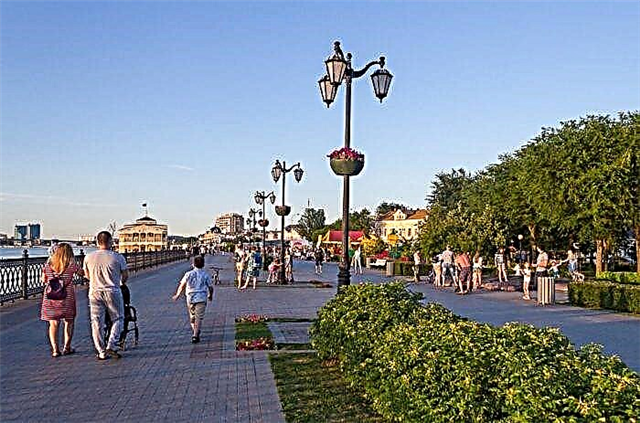
Lenin Square
The main city square adjoins one of the walls of the Kremlin. In the past, Zhitny Dvor was located here, and later Aleksandrovsky Boulevard. The square was built during the Soviet era. Its main attraction is the Neva-Volga complex of seven fountains. The largest fountains are located at the edges, they are connected by streams of water. The street along the square bears its name; the ensemble of Stalinist houses on the opposite side is interesting.

Swan Lake
A cozy corner of Astrakhan is located not far from the Kremlin and Lenin Square. The lake was formed as a result of the disappearance of one of the channels of the Volga, once the river reached up to the slopes of the fortress. Now the banks of the reservoir are landscaped, covered with granite, there is a convenient observation deck. In the center, in the middle of the water, there is a gazebo. Swans living on the lake during the warm season are under special supervision. In winter, a skating rink is organized here.

Komsomolskaya embankment
The second largest embankment of the Volga, quieter and more peaceful. It is known primarily for the fact that an annual fishing festival is held here. But even outside the festival, amateurs often fish here. The embankment starts from the Central Stadium, after 1 km 280 m turns into Victory Boulevard. There are many green spaces and benches along the entire length, there are playgrounds and cafes. There is a marina at the southern end.

John the Baptist Monastery
The founding date of the monastery dates back to the 17th century, then this place was outside the city. Today it is surrounded by the bustling shopping district of Great Isads. Over its centuries-old history, the monastery has undergone closings and revivals, several rebuildings. The temple was returned to the church in 1995. The dismantled gate church was rebuilt, the main church of 1688 was restored. The monastery has a large Sunday school, a library, children's choir groups.

Arc de Triomphe and Walk of Fame
The Arc de Triomphe was built in the image of the lost wooden structure of 1871. The 15-meter arch opens the entrance to the Astrakhan Land of Glory. It is finished with Iranian marble and Karelian granite, decorated with bas-reliefs. Monuments to famous fellow countrymen are erected on the alley: Suvorov, Trediakovsky, Ermolov, Khlebnikov. The fountain is interestingly decorated in the form of a clock, the numbers on them replace the coats of arms of the districts of the Astrakhan region. The alley leads to the Volga embankment and the monument to Peter I.

Park "Arcadia"
One of the most extensive green spaces in the hot southern city. The park, which has more than 100 years of history, has recently been renovated, with paths, benches installed, and a new large fountain inaugurated. There is an amusement park with affordable prices and a summer cafe on the territory. In the summertime, entertainment events are held here. In the center of the territory is the Arcadia Palace of Culture - a concert venue for local and visiting groups.

Astrakhan Museum of Local Lore
The museum is one of the very first regional museums, it has 5 branches in Astrakhan and 9 more - in the districts of the region. The first "Provincial Museum" was opened in 1837 at the initiative of Governor Timiryazev. Now the collection of exhibits numbers more than 300 thousand copies. The main pride of the museum is a collection of archaeological finds, gold and silver items of the Sarmatian era. Interesting collections of weapons, history of books, paintings, sculptures.
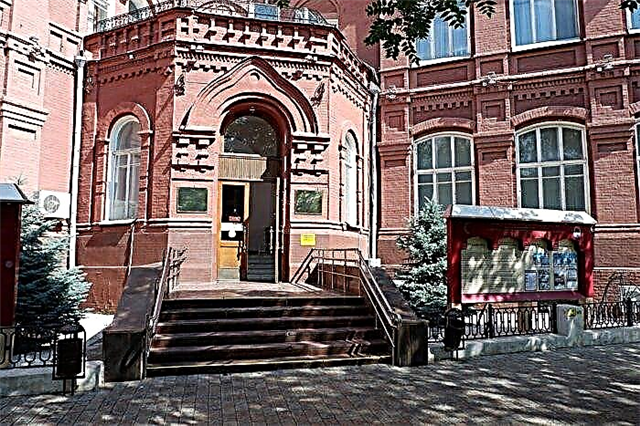
Sturgeon farms
You can find out how sturgeon fish are bred, real black caviar is obtained, at one of the fish farms. "Beluga" is located in the right-bank part of Astrakhan, in the Volga village. "Astrakhan chip" - in the village of Verkhnekalinovsky, Kamyzyaksky district. For excursion groups, they offer educational programs, delicious treats from their own products, the opportunity to purchase delicacies directly at the production site.

Market "Selenskiye Isady"
The city's main fish market is a 20-minute walk from the station. A visit to this place is not only delicious shopping, but also a fascinating excursion into the world of fish delicacies. Sellers offer to try whatever you like, and are willing to bargain. There is always a famous roach of any size, smoked catfish, sturgeon. There are hundreds of varieties of products, and it is impossible to leave without a purchase.

Soviet street
The main and very first street of the historical center, previously crossed the White City. Walking along this street is akin to visiting an open-air architectural museum. At a distance of one kilometer, there are 23 monuments of cultural heritage of the 19th - 20th centuries, including 7 federal ones. The most famous: the Astrakhan Drama Theater, the Conservatory, the building of city institutions (the residence of the governor).

Sights of the Astrakhan Kremlin
More than a dozen objects are available for inspection on the territory. The main ones, as in any Kremlin, are the historical temples. You can see the surviving towers, go to the Zeikhhaus Museum and the Guardhouse.
Assumption Cathedral and Prechistensky Gate
The main cathedral of the Astrakhan diocese, the Assumption, is located on the territory of the Kremlin. It forms a single architectural ensemble together with the gate bell tower of the Prechistensky Gate. The temple was built in 1698 - 1710, connected to the place of execution. It is considered one of the best examples of temple architecture of the 18th century. The 80-meter bell tower was erected in 1910, on the site of the previous one, which had to be dismantled.

Trinity Cathedral
The cathedral was built in 1602 - 1605 and originally belonged to the Trinity Monastery. It has a complex architectural solution: in the western part there are chambers, and in the northern part there are two churches, Sretenskaya and Vvedenskaya.At present, the restoration work is almost completed, the cathedral has acquired copper domes and gilded crosses. Unfortunately, the interior decoration and shrines of the temple were lost.

Cyril Chapel
There is a small chapel next to the walls of the Trinity Church. She bears the name of the first founder of the monastery and the first Orthodox missionary in the Astrakhan region, Abbot Kirill. According to legend, this man saved the city from a fire. After the death of the hegumen, a chapel was erected over his grave in 1677. It was rebuilt in 1802. Currently, the church is operating; weekly prayers are held in it before the relics of St. Cyril.

Museum and exhibition complex "Zeikhhauz"
The building of the former armory of the late 19th century is now used as an exhibition complex. It was rebuilt after severe destruction, most of the building is made in our time, in accordance with the style. Inside there are two spacious rooms where temporary exhibitions and educational events are held. The complex successfully combines the atmosphere of an old building and modern technical solutions (multimedia equipment, lighting).

Bishop's courtyard
One of the oldest historical monuments in the Kremlin. Initially, the wooden Bishops' House was built near the walls of the Assumption Cathedral at the beginning of the 17th century, later it was replaced by a stone one, and a house church was added. In subsequent years, the rear was completed, it acquired an additional two floors. The facades have suffered greatly over time, but tiles with the image of Alexander the Great have been preserved on them. Reconstruction is in progress.

Monuments and monuments of Astrakhan
The most recognizable historical and modern monuments and monuments of the city.
Monument to the sailors in the Sea Garden
The Sea Garden is located in the city center, between Sovetskaya and Molodaya Gvardii Streets. Here in 1922 a monument was erected dedicated to the sailors who died in 1919 and 1922. It is made in the form of a lighthouse, at the base of which there are real guns removed from ships. The inscription on the plaques says that it is here that the dead sailors are buried. A small square around the monument has been renovated and improved.

Monument to Peter I
In honor of the 285th anniversary of the decree of 30 popular monuments of Astrakhan on the founding of the Astrakhan province on the Volga embankment, it was decided to erect a monument to Peter I. The area around the monument is also named Petrovskaya. The bronze figure of the first Russian emperor together with the pedestal is 9 meters high. Peter is facing the river, at the foot of the pedestal is a forged scroll with a decree. The base of the monument is a sign of the cardinal points, decorated with sea anchors.

Sculpture "Lady with a Dog"
Small architectural form on Petrovskaya embankment is located opposite the intersection with Nikolskaya street. Made of bronze, human-sized. A young lady, dressed in a 19th century dress and hat, walks with her dog. On her left hand hangs a closed umbrella, in which she holds a bunch of flowers. The image of a lady is perfectly combined with the panorama of Maxim Gorky Street, which runs parallel to the embankment. She seemed to come out of one of the old buildings.

Sculpture "Shoe Shiner"
Another reminder of the pre-revolutionary Astrakhan and a pleasant decoration of the city embankment. This cute sculpture is loved by both citizens and guests of the city. A small figurine of a boy is located on the embankment opposite the Azimut Hotel. A cheerful cleaner suggests putting your foot on a stand, which tourists are happy to do for interesting photos. They say that the boy is taken from the film "It Can't Be", which was filmed in Astrakhan.
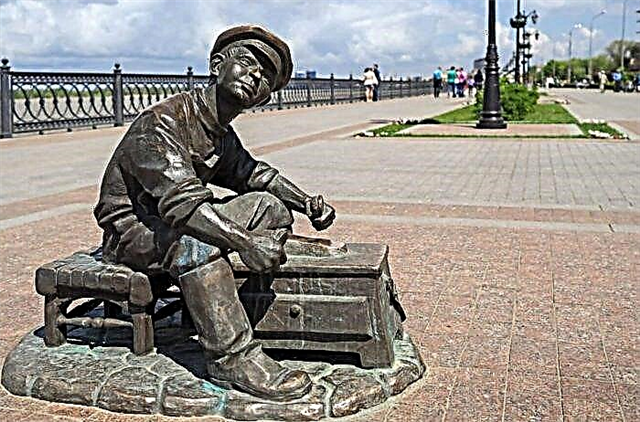
Sculpture "Ivanushka and the Little Humpbacked Horse"
The sculpture based on the well-known fairy tale was installed in 2008 in front of the Theater of the Young Spectator. This is a favorite place for photos of young theatergoers. The height of the sculpture is more than 2 meters, Ivanushka holds a feather in his hand held high, next to him is the faithful Humpbacked Horse. It is interesting that elements of this fairy tale are also used in the interior of the theater: the column in the hall is decorated with a huge firebird.

Sturgeon monument
The stone sturgeon is installed at the intersection of Sverdlov and Fioletova streets, once there was a place for unloading fish caught by fishermen. The sturgeon, as a symbol of the Astrakhan region, was the breadwinner of the city. Today the population has decreased several times, the monument is intended to draw attention to the problem. Fish farms are working to preserve the Astrakhan sturgeon. Opposite the monument there is a shop and a restaurant of one of these farms.
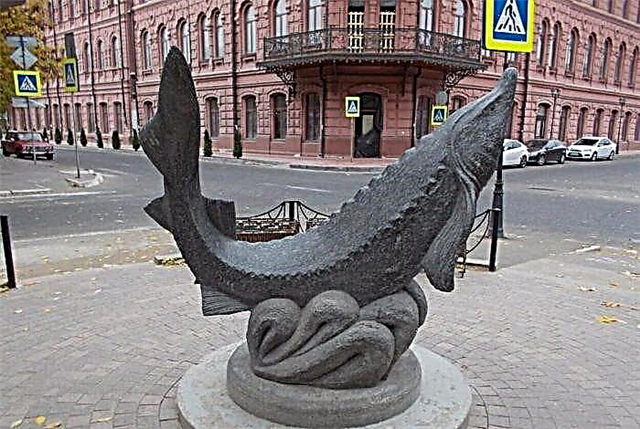
The main mosques of Astrakhan
Historical places of worship in Astrakhan, mosques built in the 19th century.
White mosque
The white-stone mosque with blue vaults was built in 1810. This is the oldest mosque in the multinational Astrakhan. During the years of Soviet power, the building was used for civilian purposes, it was greatly changed, the minaret and mihrab were lost. With donations from believers, a large-scale restoration began in 2000, during which the architectural monument was returned to its historical appearance. It is located on Kazanskaya street, on the territory of the Tatar settlement.

Black mosque
Religious and important historical site. The stone mosque was rebuilt in 1816, at the expense of the merchant Yakupov. After 1930, the mosque was abolished, and civil organizations were located in it at various times. Since 1975, the object has been recognized as a cultural monument, and only in 2005 began the revival of the building from almost ruins. The walls of the mosque are light, and the tiles and dome are dark in color. The high two-tiered minaret is decorated with traditional oriental décor.

Central mosque
The mosque is also known as the Red Mosque, it is located on the territory of the former Gilyanskaya Sloboda, now on Kazanskaya Street. Then it was the mosque number 9, nowadays it is number 1. The construction was completed in 1898, the building was comparable only with the mosques of Kazan, from where another name, Kazan, came from. The red brick building has white wall décor and emerald vaults. Here is the residence of the mufti of the Astrakhan region.

Churches and temples of Astrakhan
The most beautiful religious sites in the city, Orthodox churches and cathedrals.
Cathedral of St. Vladimir
One of the main Orthodox churches in the city, which has a special history and significance for believers. The construction of the cathedral was carried out in 1985 - 1902, the architectural style and solutions were unique for their time. After the Soviet oblivion, when a bus station was located in the building, many shrines and valuable wall paintings were lost. Since 1998, the temple began to revive, and in 2013 - a monument to the holy prince Vladimir was erected in front of it.
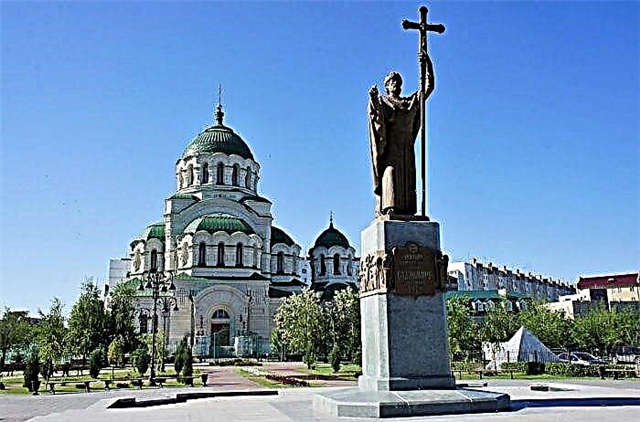
Intercession Cathedral
The cathedral was built at the end of the 19th century at the expense of the Astrakhan benefactor Ivan Gubin. The red-brick building has one gilded dome on a massive drum and three apses. A high bell tower adjoins the temple. One of the few churches that survived the Soviet era and preserved all the old frescoes and icons. The cathedral keeps many especially revered shrines; Archbishop Philip is buried within its walls. It is located next to the Selenskie Isady market, earlier this area was called Selenie.

Main theaters of Astrakhan
The best theater and concert venues in the city.
Astrakhan Opera and Ballet Theater
The brightest and most majestic building in the city, an area of 52 thousand m2, 1200 seats. The construction lasted 5 years and was completed in 2011. The best ballet troupes and opera performers of the country and the world perform on this site. The theater's own productions have the highest marks, and the open-air opera has become a feature of the Astrakhan theater. A beautiful park with fountains is laid out around the building.

Astrakhan Drama Theater
The theater was founded in 1810, initially it was located in the wooden building of the merchant Tokarev. In 1889, he moved to a new stone building, which is still located today. For more than 200 years of history, ADT has never stopped giving performances.Fyodor Chaliapin, Maria Maksakova, Oleg Strizhenov, Vladimir Menshov performed here. In addition to good performances, the viewer can visit mini-exhibitions of old theatrical costumes and props.

Astrakhan State Puppet Theater
Favorite place for little Astrakhan residents. The theater was founded in 1987 and is located in an old mansion near the city embankment, on Fioletova Street. The first floor of the building houses a museum of dolls. Regular puppet shows with musical concerts during the intermission, creative workshops, art exhibitions by young artists - all this can be visited in one place. An open air theater area is open in summer.

Astrakhan Theater for Young Spectators
The Youth Theater was founded in 1933, the first performances were given by folk amateur artists on the stage of the club. The building, in which the theater is located now, was built in 1968, it has 700 seats, large and small stages. The repertoire consists of performances for audiences of all ages. Serious works for adults are also staged. The theater often hosts groups from the capital on tour. Located on Musa Jalil Street, next to Lenin Square.

The best museums of Astrakhan
The most interesting museums in the city, which are definitely worth a visit.
Art Gallery named after P.M.Dogadin
The gallery was founded by the Astrakhan merchant and collector, Pavel Mikhailovich Dogadin in 1918. Located in a beautiful merchant's mansion on Sverdlova Street. Today the most interesting collection of art objects in the Volga region is presented here. The basis of the exposition is the work of Russian painters of the 18th - 20th centuries, there are rare canvases of the late 19th - early 20th centuries, engravings from Western Europe of the 17th - 19th centuries.

Museum of Military Glory
The museum is located in a historic three-story building of the early 20th century on Akhmatovskaya Street, opposite the Bratsk Garden. The opening took place on the eve of the 30th anniversary of the Victory. Then the exhibits were located only on the first floor, today the museum occupies all three floors. Here you can get acquainted with the military history of the region since the 16th century. Interactive maps tell the story of the 28th Army's path, and the Immersion exposition takes visitors to a real Stalingrad apartment during the defense of Stalingrad.

Museum of the history of the city of Astrakhan
The museum is located in a house of the early 19th century on Ulyanov Street. I. N. Ulyanov, the father of V. I. Lenin, was born here. Initially, the museum was dedicated to the Ulyanov family, but later, as the exposition expanded, it was renamed. The main part of the exposition is called "The City and the Citizens" and covers the period from the end of the 18th to the beginning of the 20th century. Historical interiors have been recreated in the halls, each of which tells about different estates.

House-Museum of B. Kustodiev
Artist B. Kustodiev was born in Astrakhan, left as a young man, but often came here to visit. The house, which belonged to his godmother, was decided to be used as a museum. It is located at the intersection of Sverdlov and Kalinin streets. The artist himself donated some of the paintings to the museum in his old age. Thanks to the personal belongings donated to the museum by the Kustodiev family, it was possible to recreate the atmosphere of his workshop. Also exhibited are the works of Vlasov, the artist's first mentor.

House-Museum of the poet Velimir Khlebnikov
The only museum dedicated to Khlebnikov is located in Astrakhan, on Sverdlov Street. The poet's personal collection is located in the former apartment of Khlebnikov's parents, where the interior is fully preserved. Here you can see his pen made of a willow twig, a tie donated by Mayakovsky, notes on the margins of books and sketches of future poems. The museum has a high scientific value, it contains a rich library.

Architectural landmarks of Astrakhan
The most recognizable buildings and structures of the city, monuments of architecture and urban planning.
Tower of the Transfiguration Monastery
In the late 16th - early 17th centuries, a monastery was built in the northern part of the White City to commemorate the salvation of the city from Turkish troops. Later, the monastery suffered greatly from fire and pogroms; it was restored several times. In the 1930s, the remaining monastery buildings were demolished. Only the north-east tower of the fence remained. Now the intersection of Esplanadnaya and Kommunisticheskaya streets passes here. There is an iconic antique shop inside.

Persian commercial courtyard
The guesthouse with trade shops was built in 1852 - 1863 by a merchant from Persia, Aji Useinov. Before the revolution, the building belonged to his descendants, later it was given over to apartments, which are still located here. The building has characteristic oriental forms. Despite the fact that the house is recognized as a federal monument of architecture, it is in disrepair. It is located at the intersection of Volodarsky, Chernyshevsky and Sovetskaya streets.

Matrimonial Palace
The Astrakhan registry office is located in an old mansion on the embankment, next to the Volga and Kutum spit. It was built in 1910 for a trading exchange. Architectural style: modern with elements of constructivism. The building has the features of a ship's deck, and a small turret on the facade facing the city looks like a steamer tube. In summer, lotuses bloom in Kutum; this is the only place in the city where you can see them.

House of merchant M. A. Shelekhov
The Renaissance house that belonged to an Astrakhan merchant is located on the Red Embankment. It was built in 1884. In addition to its architectural and historical value, an urban legend is associated with it. Shelekhov's daughter died at a young age from tuberculosis. The merchant promised to bequeath the building to the city, but on condition that there would be treatment for a terrible disease. The tuberculosis dispensary has been here for a long time.

House of the merchant Tetyushinov
A beautiful log house is located at the intersection of Kommunisticheskaya and Raskolnikova streets. Astrakhan merchant Grigory Tetyushinov built it for his family in 1872. After the revolution, the house was divided into apartments, the interior and layout were greatly changed. In 2010, after a large-scale restoration, a museum was opened, and the life of a merchant family of the 19th century was recreated inside. The museum hosts master classes and folklore festivals.

Where to go from Astrakhan?
The main tourist destination in the vicinity of Astrakhan is the Volga delta. Excursions and fishing are popular here. Another top spot outside the city is the museum complex, which recreates the capital of the Golden Horde.
Lotus fields in the Volga delta
Lotus, or Astrakhan rose, a real symbol of the Astrakhan region, blooms in July - August. To see the lotus fields, you need to go to the Caspian coast. The best way is to take part in one of the many excursions. The trip takes a whole day, with a departure from the city by buses, then guests are delivered along the river channels by boats or boats. Nowhere in the world is there such a huge blooming sea of these fragrant flowers.

Zoo "Baba Frosya"
The private zoo is located 40 km from the city, in the village of Ivanchug. In 2011, it was created on the basis of a former ostrich farm. Today the inhabitants of the zoo are a lot of animals, birds and reptiles (lions, panthers, raccoons, meerkats, bears, wolves). You can taste ostrich eggs in the cafe. During warmer months, on weekends, entertainments with an animator are arranged for children. There is an exit to the river, an embankment, gazebos and attractions for children.

Museum complex "Saray-Batu"
The tourist complex recreates the ancient capital of the Golden Horde. It is located 140 km from Astrakhan in the Kharabalinsky district, near the village of Selitrennoye. The city was created as a scenery for the film "Horde" in 2011. There are several streets, a khan's palace, a shopping area, and residential buildings. Also, under Selitrenny, archaeological excavations of a real ancient city are underway. Scientists consider it the largest city of the Golden Horde and one of the largest in medieval Europe.


